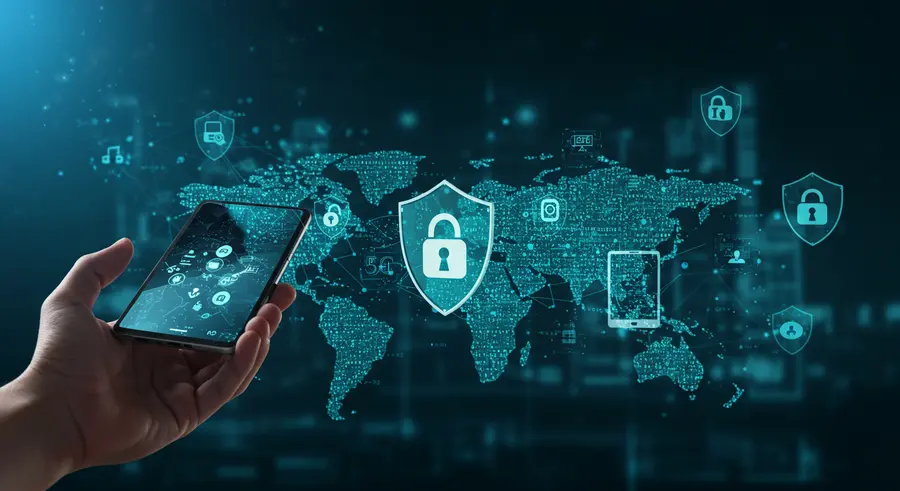Navigating the Cybersecurity Landscape of 5G and IoT

The convergence of 5G and the Internet of Things (IoT) heralds an era of unprecedented connectivity and technological advancement. However, this hyperconnected world also brings forth a new spectrum of cybersecurity challenges. As billions of devices communicate seamlessly, the attack surface for malicious actors expands, making robust security measures more critical than ever. Understanding and addressing these vulnerabilities is paramount to harnessing the full potential of 5G and IoT safely.
The Expanded Attack Surface
With 5G enabling a massive increase in the number of connected IoT devices – from smart home appliances and wearable technology to industrial sensors and critical infrastructure components – the potential points of entry for cyber threats multiply. Each device, sensor, and connection point can be a potential vulnerability if not properly secured.
- Device-Level Vulnerabilities: Many IoT devices are designed with limited processing power and storage, often leading to scaled-down security features. Default credentials, unpatched firmware, and insecure communication protocols are common issues.
- Network-Level Threats: While 5G offers enhanced security features like network slicing and improved encryption, the complexity of these networks can also introduce new vulnerabilities. Eavesdropping, man-in-the-middle attacks, and denial-of-service (DoS) attacks remain significant concerns.
- Data Security and Privacy: The vast amounts of data generated by IoT devices raise significant privacy concerns. Protecting sensitive information from unauthorized access, both in transit and at rest, is crucial. For further insights on data management, one might explore Oracle Database solutions for robust data infrastructure.
Key Cybersecurity Considerations for 5G and IoT
A multi-layered approach to security is essential to protect 5G-enabled IoT ecosystems. This involves securing the devices, the network, and the data.
Securing IoT Devices
- Secure by Design: Manufacturers must embed security into the design and development lifecycle of IoT devices. This includes secure boot processes, hardware-based security elements, and regular firmware update mechanisms.
- Strong Authentication and Authorization: Implementing robust authentication mechanisms, such as multi-factor authentication (MFA), and ensuring proper authorization for device access and data sharing are vital.
- Patch Management: A clear and efficient process for deploying security patches and updates to IoT devices is critical to address newly discovered vulnerabilities.
Protecting the Network
- Network Slicing: 5G's network slicing capabilities can be leveraged to create isolated virtual networks for different IoT applications, limiting the blast radius of a security breach.
- End-to-End Encryption: Ensuring that data is encrypted at all stages – from the device to the cloud and back – is fundamental.
- Intrusion Detection and Prevention Systems (IDPS): Deploying sophisticated IDPS tailored for IoT traffic patterns can help detect and mitigate attacks in real-time.
Safeguarding Data
- Data Minimization: Collect only the necessary data and anonymize or pseudonymize it whenever possible.
- Secure Data Storage and Transmission: Utilize strong encryption protocols for data at rest and in transit.
- Compliance and Regulation: Adhering to relevant data protection regulations (e.g., GDPR, CCPA) is crucial. Interested parties can learn more about regulatory frameworks at sites like the NIST Cybersecurity Framework page.
The Role of AI and Machine Learning in IoT Security
Artificial Intelligence (AI) and Machine Learning (ML) are increasingly being used to enhance IoT security. These technologies can analyze vast amounts of data from IoT devices and networks to detect anomalies, predict threats, and automate security responses. For instance, ML algorithms can learn normal device behavior and flag deviations that might indicate a compromise.
Future Outlook and Continuous Vigilance
The cybersecurity landscape for 5G and IoT is constantly evolving. As new technologies emerge and threat actors become more sophisticated, a proactive and adaptive security posture is essential. This includes continuous monitoring, regular security assessments, threat intelligence sharing, and fostering a culture of security awareness among all stakeholders. Ensuring that development teams are well-versed in secure coding practices is also key; resources like OWASP (Open Web Application Security Project) provide valuable guidance in this area.
By prioritizing cybersecurity from the outset and embracing a holistic security strategy, we can unlock the immense benefits of 5G and IoT while mitigating the associated risks, paving the way for a more connected and secure future.
Back to Overview